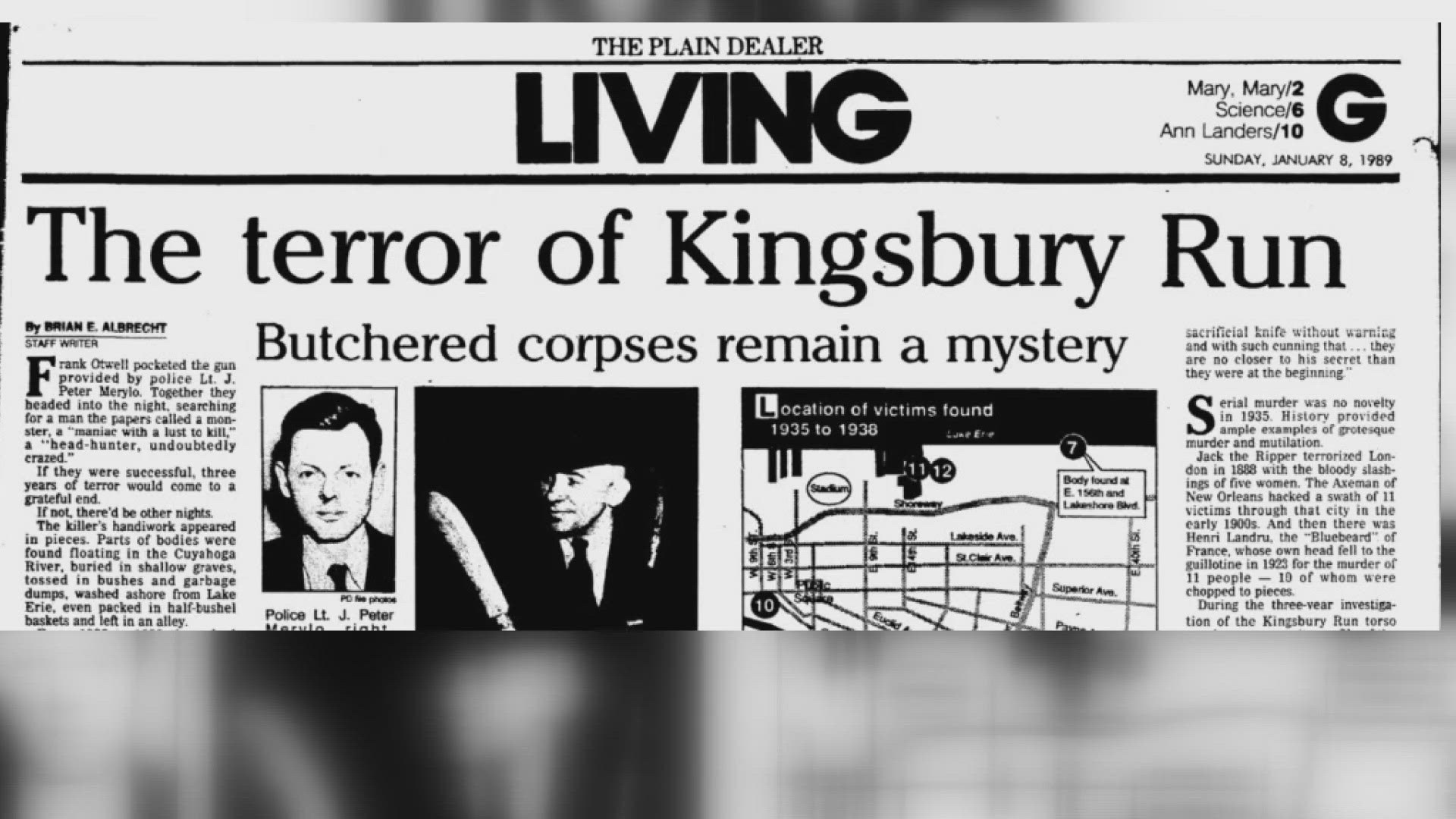CLEVELAND — A decades-old serial murder case in Cleveland may soon be getting some new life, as the Cuyahoga County medical examiner works to identify victims of the notorious "torso murders" from the 1930’s.
They're among the most gruesome murders in Cleveland history — at least a dozen victims decapitated and dumped in an area of the city then known as Kingsbury Run.
"That's way off the charts," County Medical Examiner Dr. Thomas Gilson said. "That's somebody, you know, you want to start looking for — an individual who's doing this."
But 90 years later, the name of the suspect dubbed the "Torso Killer" and the "Mad Butcher of Kingsbury Run" is still a mystery.
"Never caught, never identified," Gilson noted.
And 10 of his known victims have also never been identified. What's left of their bodies are buried in unmarked graves somewhere in Potter's Field in Highland Hills.
"We don't know who they are, you know?" Gilson said. "And I think that there's something fundamental in human nature that you kind of want to know who the person was that died."
Gilson and his team at the medical examiner's office are working with the nonprofit organization DNA Doe Project to finally learn who the victims are.
“The number of hurdles to get over where something potentially might go wrong is not a trivial number,” he said.
The challenges begin with finding the gravesites of the victims, which may prove to be difficult enough on its own. Then, his team would exhume the body, with the hope that it’s preserved well enough to collect a specimen and recover some DNA. But that’s only part of it.
“It’s one of the things we say in forensics, you never know what an exhumation’s going to look like until you actually do it,” he said. “It’s not like I do DNA and I suddenly get a name. That’s not going to work.”
That’s where genetic genealogy comes in. The DNA Doe Project creates a profile for a victim using DNA tests and genealogy work to try to connect them to relatives to discover who they are.
“Giving a name to people who were just buried in an unmarked grave, that’s meaningful to me,” Gilson said.
And he’s hopeful if they can identify some victims, it may also lead his team to finally crack the case of the notorious “torso killer”.
“Yeah, it’d be very nice to kind of put some closure on it,” he said.
Gilson said they hope to locate and begin digging up the body of one of the victims before the ground freezes this winter.

